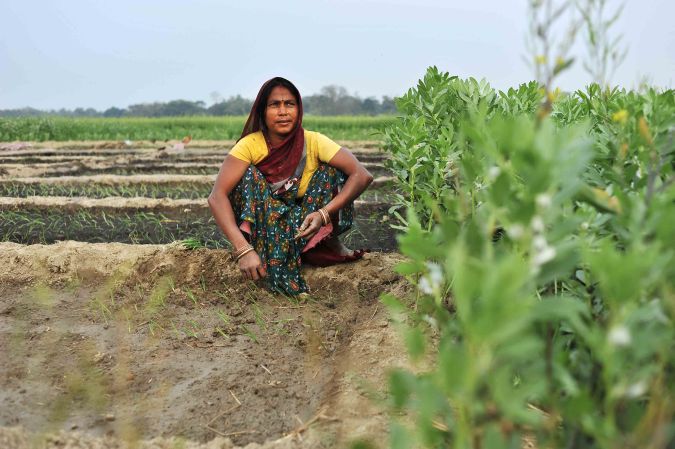Why GAMES could mean a win-win for the Eastern Ganges Basin
The risk of devastating floods and droughts in one of the most densely populated regions of the world can be minimized and food production boosted, by taking advantage of underground water sources, according to a new research paper published by the International Water Management Institute (IWMI).

Home to around 400 million people, the Eastern Ganges Basin includes parts of India, Bangladesh and Nepal. Approximately 80% of those living in rural areas are subsistence farmers, poverty is endemic and millions face the extremes of flooding or water shortages each year. Yet, vast areas boast fertile soils and extensive groundwater reserves, say researchers in IWMI’s Working Paper 157, Hydrogeology of the Eastern Ganges Basin: An overview.
“The aquifer underlying the Eastern Ganges Basin is probably one of the biggest and most prolific in the world, and acts like a huge bucket,” said Sanmugam Prathapar, Leader for IWMI’s research theme on Productive Water Use, and co-author of the paper.
[pullquote type=”pullquote1″ content=”The issue is that it’s currently full of water. If you drill a hole in the ground in some parts of the basin, you’ll reach water within two meters. This means that when there are heavy rains there is nowhere for the rainwater to go, which leads to flooding.” quote_icon=”yes” align=”center”]The issue is that it’s currently full of water. If you drill a hole in the ground in some parts of the basin, you’ll reach water within two meters. This means that when there are heavy rains there is nowhere for the rainwater to go, which leads to flooding.[/pullquote]
The scientists propose that increasing the rate of groundwater extraction for irrigation during the dry season could give farmers up to two additional cropping seasons each year. At the same time, it would leave extra capacity for the aquifer to soak up excess rainwater during the monsoon season, reducing the risk of floods. According to the paper, only around one-third of the aquifer’s renewable water reserves are currently being exploited, meaning that approximately 100 billion cubic meters of water are available.
The theory builds on work dating back to the 1970s, known as the Ganges Water Machine, which highlighted the enormous, untapped potential of the aquifer, but failed to result in improved management. The new approach, known as Gangetic Aquifer Management for Ecosystem Services (GAMES), helps to give policymakers a clearer idea of how to sustainably use the aquifer and – as a result of detailed profiling – where exactly in the basin they should do it.
According to the authors of Working Paper 157, this is the first time such a comprehensive inventory of the basin’s groundwater reserves has been compiled and made publicly available. They expect it to be of particular interest to national policymakers in India, who have been keen to shift the country’s rice zone away from the water-stressed west to states such as Bihar, Jharkhand and West Bengal in the east, where millions of smallholder farmers have plenty of groundwater but often lack the means to access and use it productively.
“Many farmers in the Eastern Ganges Basin just need access to water in the right amount and at the right time,” said Prathapar.
[pullquote type=”pullquote1″ content=”But the swings between droughts and floods make life precarious. They’re one of the major reasons why the enormous agricultural potential of the region is not being fulfilled.” quote_icon=”yes” align=”center”]But the swings between droughts and floods make life precarious. They’re one of the major reasons why the enormous agricultural potential of the region is not being fulfilled.[/pullquote]
“A lack of land tenure, fragmented farm plots, high energy prices that affect farmers’ ability to use pumps, and the prohibitive cost of pumps themselves also prevent farmers from making use of the abundant groundwater,” continued Prathapar.
“The GAMES approach enables us to answer the question that has plagued water managers for decades: Why have we not been able to make use of this massive water resource?”
In order to refine their recommendations, the researchers will now look at issues of groundwater quality within the basin, and highlight areas where fluoride and arsenic contamination affect water supplies.
[hr top=”no”/]
Read the research paper:
Rajmohan, N.; Prathapar, S.A. 2013. Hydrogeology of the Eastern Ganges Basin: An overview. Colombo, Sri Lanka: International Water Management Institute (IWMI). 42p. (IWMI Working Paper 157). doi: 10.5337/2013.216

